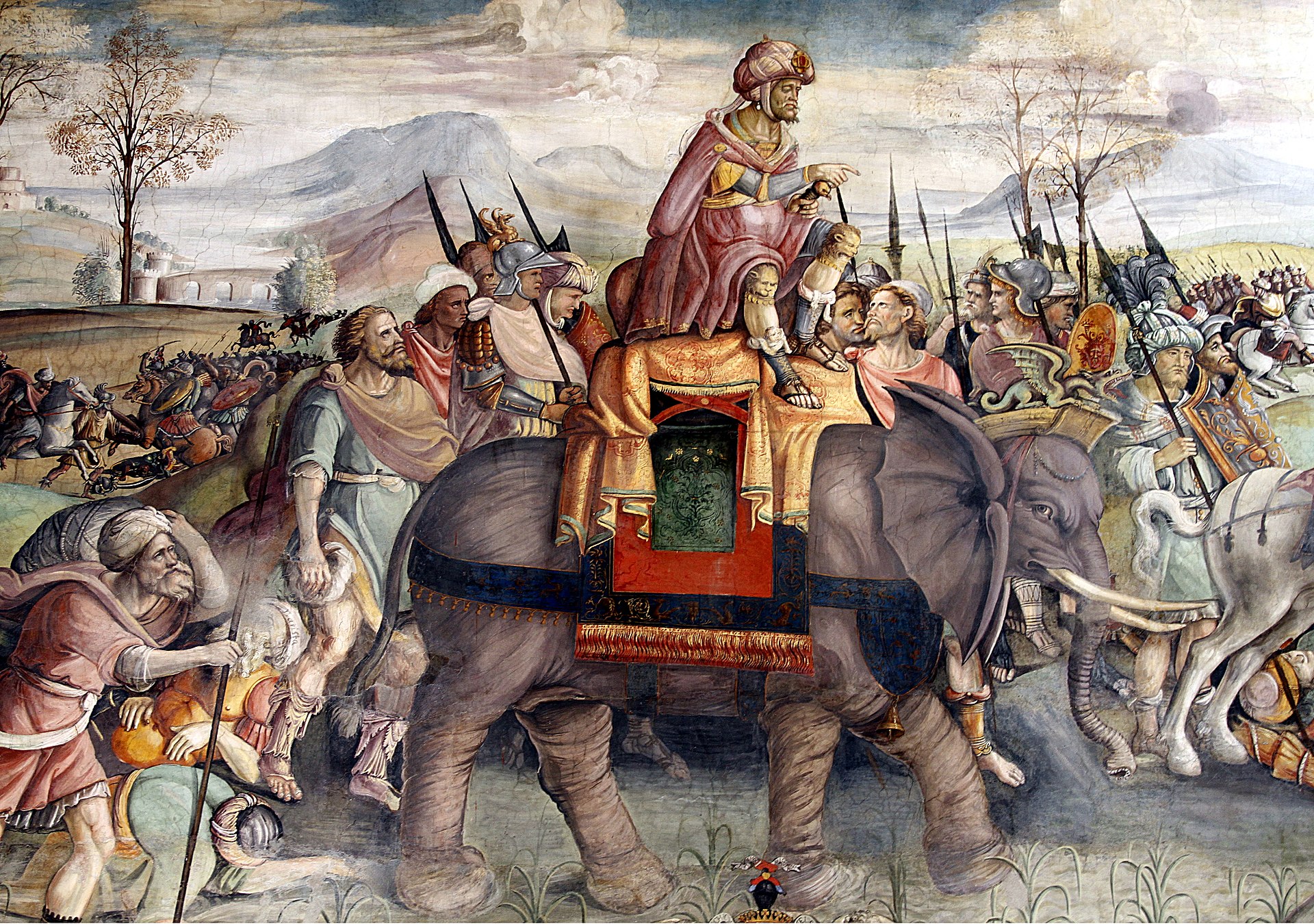The Phoenicians were the most civilized people of the Near East and the greatest businessmen and conduits of culture of the ancient world, including the alphabet. Their expansion westward across the Mediterranean is told in the legend of the Rape of Europa, and other myths—the story of princess Elissa/Dido and of Dido and Aeneas—tell of their founding of Carthage in 814 BCE. Carthage soon became the most powerful and cultured city of the western Mediterranean, their ships dominating the trade routes, especially for vital metals and grain. Conflict was inevitable with Etruscans, Greeks, and Romans each in turn driving the Carthaginians (Punics) reluctantly to war. The Phoenician story culminates in three titanic struggles the Romans called the Punic (i.e. Phoenician) Wars. Hannibal terrorized the Romans like no enemy they ever encountered, but in the end the Romans erased Carthage entirely. Yet in legend, literature, and grand opera, Carthage lives forever.
FRIDAY, NOVEMBER 6, 2020 | 7:30 – 9:30 pm
Legendary Carthage / Douglas Kenning (Director, Sicily Tour)
The mythic cycle begins with how the Rape of Europa led to the story of Phoenix, which led to the several stories of the Phoenician princess Elissa, which led to the story of Dido and Aeneas as told by Virgil. Few mythic cycles are as important as this one in the history of Western painting and Western music. It is fundamental also to any understanding of Carthage historically, because myth shaped how Carthaginians viewed themselves (e.g. Hannibal playing at being Hercules), how the Romans saw them (giving rationale for the Roman foreign policy against them), and how we remember them today.
Performance / Carthage Goes to the Opera, featuring excerpts from Purcell’s Dido and Aeneas, with beautiful arias and ensembles, especially the heartbreaking Dido’s Lament. The tradition of the lament was based on the lament in near Eastern literature. DIDO AND AENEAS An Opera in Three Acts, Z. 626, composed in 1683 by Henry Purcell (1659-1695). Introduced by Clifford (Kip) Cranna (Dramaturg Emeritus, San Francisco Opera). Performers include Mezzo-soprano Heidi Waterman performing Dido, Tenor David Kurtenbach as Aeneas, Soprano Helene Zindarsian as Belinda, and Mezzo-soprano Natasha Hoehn performing as the Sorceress and Lady in Waiting; accompanied by Kevin Korth on piano.
SATURDAY, NOVEMBER 7, 2020 | 10 am – 12:00 noon & 1:30 – 4 pm
Introduction / George Hammond (Humanities West), Moderator
Writing and Erasing Ancient Carthage / Alexandra Pappas (Associate Professor, Classics, SFSU)
What does the writing of ancient Carthage and her founding Phoenicians have to tell us, and what does it leave out? What histories have been preserved, and what has been erased? Ancient inscriptions, the objects inscribed, and their movement along trade networks paint part of the picture. The interchange between written and spoken languages of the ancient Mediterranean, and the destruction and preservation of literary sources fill in additional pixels. Although the Punic writing of Carthage descends directly from its Phoenician forebear, by an ironic twist it is rather ancient Greek and Latin literary sources that preserve much of what we know about ancient Carthage today, including her ultimate destruction—and the erasure of her literature—at the hands of the Romans.
Of Kings, Gods, and Human Sacrifice: Carthaginian Religion in a Mediterranean Context / Lela Urquhart (Senior Development Director, Getty Research Institute)
Carthaginian religion is fascinating, but has, throughout history, been a controversial subject. It was derived from the traditional polytheistic religion of the Phoenician city-states, and most particularly the religion of Tyre, the “mother-city” of Carthage with a patron deity known as Melqart. This lecture will explore how the Tyrian background and especially ties to the deity Melqart infused many aspects of Carthaginian and Punic religion in the western Mediterranean, ranging from its emphasis on the religious significance of royalty to its prominent role in one of the most notorious religious practices of Carthage, child sacrifice.
The Reception of Dido in Western Culture: From Vergil to Video Games / Robert Gurval (Associate Professor Emeritus, Classics, UCLA)
Borrowing from multicultural traditions of myth and history, the Roman poet Vergil invented Dido, Phoenician exile, founder of Carthage, and lover of Trojan Aeneas. Ever since, Ovid toyed with her, St. Augustine wept, and Dante put her in hell. From the medieval to modern eras, poems and plays, and above all operas, have spoken or sung her tragic tale. Her beauty has been represented on Renaissance painted canvasses and woven tapestries. In the 21st century, a novel has modernized her love story and a video game has placed her as a character in the conflict of civilizations. This lecture will survey her immortal story.
Hannibal, Rome’s Nightmare / Patrick Hunt (Stanford and National Geographic)
Hannibal, great Carthaginian general, weaponized nature – making Roman armies cross icy streams, face fog and dust storms, etc. – in his prolonged war against Rome in Italy from 218 BCE onward for almost two decades. Brilliantly defeating multiple Roman legions even when outnumbered, Hannibal’s flexible craftiness and ability to get in the minds of his enemy – employing a staggering arsenal of tactics – are still admired and copied in modern warfare, emulated wherever he is taught around the world for his pioneering military intelligence. It is likely Roman legions would never have conquered the world had Hannibal not first schooled Rome in new ways of professional warfare. Even Machiavelli created his famous dictum “better to be feared than loved” around Hannibal. It is an irony that a leader who won so many battles but could not win the war only wanted Rome to leave Carthage alone. Hannibal’s policy ultimately failed as Rome was inexorably driven to destroy Carthage by 146 BCE.
Panel Discussion with Presenters / George Hammond, Moderator (Humanities West)
